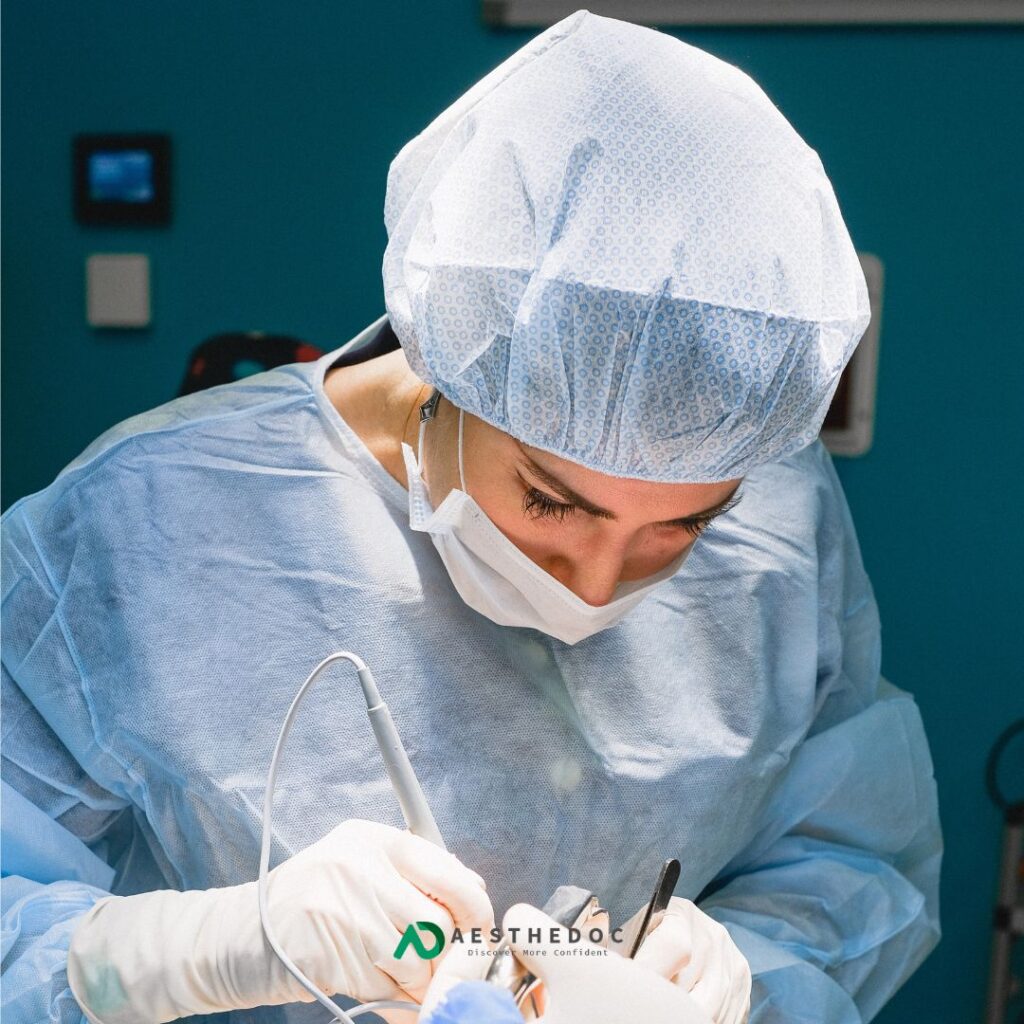Vaginal Rejuvenation
Vaginal Rejuvenation Non Surgical, Rawalpindi & Lahore

In Pakistan, many women now actively seek non-surgical vaginal rejuvenation treatments that are cost-effective, discreet, and deliver satisfying results. One of the most advanced, non-invasive options available today is V-Lase Laser Vaginal Rejuvenation—a safe and gentle solution for addressing age-related changes in intimate health.
Why Women Choose Non-Surgical Vaginal Rejuvenation
As women age, estrogen levels decline, leading to physical changes in the intimate areas. This includes thinning of the vaginal walls, dryness, discomfort, and a decrease in natural lubrication. While these changes are often associated with menopause, they can also occur earlier due to multiple childbirths or certain health conditions.
Fortunately, modern aesthetic medicine offers innovative, non-surgical options to address these concerns—V-Lase being one of the most effective.
What is V-Lase Vaginal Rejuvenation?
V-Lase is a non-surgical laser therapy designed to rejuvenate the vaginal canal by restoring tissue thickness, elasticity, and hydration. This procedure enhances the overall sexual experience while addressing issues like vaginal dryness, irritation, and mild bladder leakage.
It stimulates collagen production and improves blood circulation, helping the vaginal walls regain their natural firmness and moisture—without the need for incisions, anesthesia, or downtime.
Ideal Candidates for V-Lase Treatment
You may be a good candidate for V-Lase if you:
- Experience reduced vaginal tightness due to childbirth or aging
- Suffer from vaginal dryness or shrinking
- Have stress urinary incontinence (bladder leaks during laughter or movement)
- Experience reduced sexual satisfaction after menopause
- Are planning or have undergone labiaplasty and want additional improvement
Conditions Treated with V-Lase Laser Therapy
- Pain during sexual intercourse
- Vaginal dryness and inflammation
- Decreased sensation and satisfaction
- Mild urinary incontinence
- General vaginal laxity
How V-Lase Works
V-Lase utilizes a non-ablative laser that emits controlled heat in a pulsed pattern, targeting deeper layers of vaginal tissue. This process stimulates the formation of new collagen and elastin, thickens the vaginal wall, and improves lubrication.
Unlike surgical procedures, the superficial vaginal lining remains protected, minimizing risk and ensuring comfort.
Duration of the Procedure
A typical V-Lase treatment session takes about 30 minutes and requires no special preparation beyond a routine pelvic exam conducted within the past year.
When to Expect Results
Many women notice improvement as early as the second treatment or within two weeks post-procedure. The most dramatic and long-lasting results usually develop between 3 to 6 months after completing the treatment plan.
Post-Treatment Recovery
One of the biggest advantages of V-Lase is that there is no downtime. Patients can resume normal daily activities immediately. However, it is recommended to:
- Avoid strenuous physical activity for a couple of days
- Refrain from sexual activity for approximately one week to allow the tissue to fully recover
Any mild sensitivity experienced during intercourse after treatment typically resolves on its own.
Is the Procedure Painful?
V-Lase is non-invasive and painless. Most women report feeling only a gentle warmth during the session. No anesthesia or medication is required.
Final Words
If you’re experiencing discomfort, dryness, or a lack of satisfaction in your intimate life due to aging, childbirth, or hormonal changes, V-Lase Vaginal Rejuvenation offers a safe, effective, and non-surgical solution. The treatment is quick, discreet, and provides long-lasting improvements in vaginal health and wellness.
For consultations, appointments, or personalized evaluations, visit:
Aesthedoc Clinic in Islamabad
Aesthesurge Clinic in Rawalpindi
Both clinics are equipped with state-of-the-art laser technology and offer professional care with complete confidentiality. Take the first step toward renewed confidence and intimate wellness today.

Vaginal Rejuvenation
Vulvar Skin Rejuvenation in Rawalpindi

Intimate areas, including the vulva, are exposed to hormonal changes, friction, and aging, which can lead to skin laxity, pigmentation, rough texture, and dullness. Vulvar skin rejuvenation is a specialized cosmetic gynecology treatment designed to restore youthful texture, even tone, and improved aesthetics.
At Aesthedoc Clinic, we offer advanced chemical peel and laser vulvar rejuvenation treatments under the expert supervision of Dr. Naila Frukh, a highly qualified cosmetic gynecologist, ensuring safe, effective, and natural results.
This guide covers:
- Causes of vulvar skin aging and pigmentation
- Types of vulvar skin rejuvenation: chemical peels and laser treatments
- Benefits, procedure details, and recovery
- Safety considerations and expected results
- Why Aesthedoc Clinic is the best choice in Rawalpindi
1. Understanding Vulvar Skin Concerns
Women commonly experience changes in vulvar skin due to:
- Aging and hormonal changes: Menopause and reduced estrogen can lead to dryness and wrinkling.
- Friction or irritation: Tight clothing, cycling, or repetitive movement.
- Hyperpigmentation: Darkening from hormonal shifts, post-inflammatory pigmentation, or genetic predisposition.
- Loss of elasticity and tone: Vaginal and vulvar tissues may appear sagging or dull.
- Skin texture issues: Roughness or uneven skin surface, often post-shaving or waxing.
Vulvar skin rejuvenation addresses these concerns, improving appearance, texture, and confidence.
2. Types of Vulvar Skin Rejuvenation Treatments
A. Chemical Peels
Chemical peels use a medical-grade solution to exfoliate and renew the outer vulvar skin.
- How It Works:
The peel removes damaged skin layers, stimulating collagen production and revealing smoother, brighter skin. - Benefits:
- Reduces hyperpigmentation and uneven tone
- Improves skin texture and softness
- Minimally invasive with quick recovery
- Procedure Details:
- Vulvar area is cleansed and prepared
- Chemical peel solution applied for a controlled duration
- Neutralized and treated skin moisturized
- Post-care instructions provided for optimal healing
- Recovery: Mild redness or peeling for 1–3 days. Avoid friction or sexual activity during initial healing.
B. Laser Vulvar Rejuvenation
Laser treatments are highly effective for skin tightening, tone correction, and pigmentation reduction.
- How It Works:
Fractional CO₂, Er:YAG, or Q-switched lasers target pigmented cells and stimulate collagen and elastin production. - Benefits:
- Tightens and rejuvenates vulvar skin
- Improves tone and reduces pigmentation
- Enhances elasticity and overall aesthetics
- Non-invasive, minimal discomfort
- Procedure Details:
- Topical anesthesia applied for comfort
- Laser passes over the targeted vulvar area
- Multiple passes may be used depending on skin condition
- Procedure lasts 20–40 minutes with minimal downtime
- Recovery: Mild swelling or redness may occur; full results appear after 1–2 weeks.
C. Combination Treatments
For optimal results, many patients combine chemical peel + laser therapy to address:
- Pigmentation
- Loss of elasticity
- Skin roughness or dullness
A customized treatment plan ensures natural, uniform, and long-lasting results.
3. Benefits of Vulvar Skin Rejuvenation
- Even Skin Tone: Reduces dark patches and hyperpigmentation
- Improved Texture: Smooth, soft, and youthful skin
- Enhanced Confidence: Increased comfort in intimate situations
- Minimally Invasive: Quick procedures with short recovery
- Boosted Collagen Production: Long-term rejuvenation and elasticity
4. Who Is an Ideal Candidate?
- Healthy women experiencing vulvar pigmentation, roughness, or laxity
- Post-childbirth women noticing skin texture changes
- Women seeking non-surgical aesthetic improvement
- Not suitable for women with active genital infections or untreated skin conditions
5. Recovery and Aftercare
- Immediate: Mild redness, warmth, or peeling
- 1–3 Days: Avoid sexual activity and friction; follow aftercare instructions
- 1 Week: Normal activities resume; moisturize as recommended
- Long-Term: Results improve over 2–4 weeks; periodic maintenance may be advised
Aftercare Tips:
- Wear loose, breathable clothing
- Avoid harsh soaps or exfoliation
- Follow topical cream and hygiene instructions
- Attend follow-up sessions for best outcomes
6. Risks & Safety Considerations
When performed by an experienced cosmetic gynecologist:
- Temporary redness or mild swelling
- Minor irritation or peeling (for chemical peels)
- Rare risk of hyper- or hypo-pigmentation
- Infection risk is minimal with proper sterile technique
Safety Tip: Avoid random OTC whitening or peel products — professional treatments are controlled, safe, and effective.
7. Cost of Vulvar Skin Rejuvenation in Rawalpindi
- Chemical Peels: PKR 10,000 – 25,000 per session
- Laser Rejuvenation: PKR 20,000 – 50,000 per session
- Combination Treatments: PKR 35,000 – 70,000 depending on areas treated
Costs vary based on individual skin condition, number of sessions, and chosen technology.
8. Why Choose Aesthedoc Clinic for Vulvar Skin Rejuvenation
Aesthedoc Clinic is a leading cosmetic gynecology center in Rawalpindi:
- Expert Surgeon: Dr. Naila Frukh – skilled in vulvar and vaginal aesthetic treatments
- Advanced Technology: Certified lasers and medical-grade chemical peels
- Patient-Focused Care: Confidential consultation, tailored treatment plans
- Minimal Downtime: Quick recovery and natural-looking results
- Combination Expertise: Laser, chemical peels, PRP, and vaginal rejuvenation
9. About Dr. Naila Frukh
Dr. Naila Frukh – Cosmetic Gynecologist Surgeon at Aesthedoc Clinic
- MBBS – Nishtar Hospital (2015)
- WMO – Population Welfare Department (2016)
- FCPS – Obstetrics & Gynecology (2024)
- Fellowship in Aesthetic Gynecology – American Board (2023)
Dr. Naila specializes in vulvar skin rejuvenation, vaginal tightening, labiaplasty, and intimate aesthetic procedures, ensuring safe, precise, and natural results.
10. Frequently Asked Questions (FAQ)
Q1: Is vulvar skin rejuvenation painful?
A: Both chemical peel and laser procedures are minimally invasive. Mild discomfort may occur, but topical anesthesia ensures comfort.
Q2: How many sessions are required?
A: 1–3 sessions are typical, depending on skin condition and desired results.
Q3: Are results permanent?
A: Long-lasting results can be achieved; periodic maintenance is recommended for sustained effects.
Q4: Can this treatment be combined with other procedures?
A: Yes, combination with laser vaginal tightening, PRP, or labiaplasty is safe and enhances overall aesthetics.
Q5: Who should avoid this procedure?
A: Women with active infections, open sores, or untreated skin conditions should postpone treatment.
11. Book Your Vulvar Skin Rejuvenation in Rawalpindi
Restore youthful texture, tone, and confidence with professional vulvar skin rejuvenation at Aesthedoc Clinic.
Consult with:
Dr. Naila Frukh – Cosmetic Gynecologist Surgeon
- MBBS, FCPS (Ob-Gyn), Fellowship in Aesthetic Gynecology
Schedule a consultation today for a personalized, safe, and effective treatment plan.
Vaginal Rejuvenation
Vaginal Whitening & Pigmentation Treatments in Rawalpindi

In today’s world, intimate aesthetics are becoming an essential part of women’s overall confidence and well-being. Vaginal or vulvar pigmentation is a common concern for many women in Rawalpindi and across Pakistan. Darkened areas, uneven tone, or post-inflammatory pigmentation can result from hormonal changes, friction, genetics, aging, or childbirth.
At Aesthedoc Clinic, we provide safe, effective, and medically approved vaginal whitening treatments that restore the natural appearance of intimate areas while prioritizing health, sensitivity, and comfort. Under the guidance of Dr. Naila Frukh, a specialist in cosmetic gynecology, patients experience professional care, minimal downtime, and noticeable results.
This comprehensive guide covers:
- Causes of vulvar pigmentation
- Treatment options: lasers, PRP, topical solutions, fillers
- Combination treatments for optimal results
- Recovery and safety tips
- Costs in Rawalpindi
- Why choose Aesthedoc Clinic
1. Understanding Vaginal / Vulvar Pigmentation
Common Causes
Vulvar darkening is natural and can occur due to:
- Hormonal changes: Pregnancy, menopause, or PCOS can increase melanin production.
- Friction and irritation: Tight clothing, prolonged sitting, or shaving.
- Genetics: Natural skin tone variations.
- Post-inflammatory hyperpigmentation: Skin darkening after irritation, rashes, or minor trauma.
- Aging: Thinning and changes in skin elasticity can accentuate pigmentation.
Why It Matters
While pigmentation is natural and harmless, many women seek treatment for:
- Confidence and aesthetics
- Comfort during physical activity
- Enhanced sexual satisfaction
2. Treatment Options in Rawalpindi
At Aesthedoc Clinic, we combine modern technology and medical expertise to provide the following options:
A. Laser Vaginal / Vulvar Whitening
Laser treatments are non-surgical, safe, and effective.
- How It Works:
Fractional or Q-switched lasers target melanin, breaking pigment down for natural lightening. Collagen stimulation improves skin texture. - Benefits:
- Non-invasive with minimal downtime
- Gradual and uniform lightening
- Can be combined with vaginal tightening procedures
- Sessions: Typically 1–3 sessions for optimal results
B. PRP (Platelet-Rich Plasma) Therapy
PRP therapy uses autologous growth factors to rejuvenate intimate tissues.
- How It Helps:
- Improves skin texture and elasticity
- Lightens pigmentation gradually
- Enhances lubrication and sensation
- Procedure: Blood is drawn, centrifuged, and PRP injected into targeted areas. Minimal downtime and highly safe.
C. Topical Treatments & Creams
- Medical-grade creams can complement laser or PRP treatments.
- Target mild pigmentation and uneven tone
- Should only be used under medical supervision to avoid irritation.
D. Fillers & Minimally Invasive Options
- Hyaluronic acid fillers can improve tone and contour of the vulvar region.
- Adds volume to labia majora while brightening skin.
3. Combination Treatments for Enhanced Results
Many women benefit from customized “designer intimate care” packages combining:
- Laser whitening + PRP therapy – Tightens tissue, improves tone, and lightens pigmentation
- Laser whitening + Labiaplasty or Vaginal Tightening – Enhances aesthetics and sensation
- Topical cream + PRP maintenance – Sustains results and prevents recurrence
4. Recovery and Aftercare
- Immediate Effects: Mild redness or swelling may occur; typically resolves within hours to days
- 1–2 Days: Resume light activity; avoid friction, sexual activity, or tight clothing
- 1 Week: Skin tone improvement becomes noticeable; minor irritation may occur
- Long-Term Maintenance: Regular follow-ups, hydration, and topical care help sustain results
Tips for Safe Recovery:
- Wear loose, breathable clothing
- Avoid harsh soaps or scrubbing
- Follow all aftercare instructions provided by the clinic
- Maintain hygiene but avoid over-washing
5. Risks and Considerations
When performed by an experienced cosmetic gynecologist, risks are minimal:
- Temporary redness, mild swelling, or tenderness
- Rare infection (mitigated by proper hygiene and clinical standards)
- Hyperpigmentation or hypopigmentation (rare with certified lasers)
- Sensitivity changes (usually temporary)
Safety Tip: Avoid over-the-counter bleaching creams without medical guidance. Always consult a qualified specialist.
6. Cost of Vaginal Whitening in Rawalpindi
- Laser Whitening: PKR 8,999 – 29,999 per session
- PRP Therapy: PKR 30,000 – 60,000 per session
- Topical Medical Creams: PKR 2,500 – 8,000 per course
- Fillers: PKR 30,000 – 100,000 per session
Note: Packages combining multiple treatments may offer discounted rates. Prices vary based on individual requirements, pigmentation severity, and chosen technology.
7. Why Choose Aesthedoc Clinic for Vaginal Whitening?
Aesthedoc Clinic is a trusted center for cosmetic gynecology in Rawalpindi:
- Expert Surgeon: Dr. Naila Frukh, specialized in aesthetic gynecology
- Safe, certified devices for laser and PRP therapy
- Personalized consultation and treatment plans
- Minimal downtime, confidential environment, and high patient satisfaction
- Expertise in combination treatments for enhanced results
8. About Dr. Naila Frukh
Dr. Naila Frukh – Cosmetic Gynecologist Surgeon at Aesthedoc Clinic
- MBBS – Nishtar Hospital (2015)
- WMO – Population Welfare Department (2016)
- FCPS – Obstetrics & Gynecology (2024)
- Fellowship in Aesthetic Gynecology – American Board (2023)
Dr. Naila combines medical expertise with aesthetic precision, offering safe, effective, and natural results for intimate pigmentation, vaginal tightening, and labial enhancements.
9. Frequently Asked Questions (FAQ)
Q1: Is vaginal whitening painful?
A: Laser or PRP procedures are minimally invasive. Most patients report mild discomfort; topical creams are painless.
Q2: How long before I see results?
A: Laser and PRP show improvement in 1–2 sessions; topical treatments may require 3–6 weeks.
Q3: Are the results permanent?
A: Pigmentation improvement is long-lasting, but maintenance may be required depending on lifestyle and hormonal changes.
Q4: Can multiple treatments be combined?
A: Yes, combination treatments enhance both function and aesthetics, often recommended for optimal results.
Q5: Are over-the-counter creams safe?
A: Only medical-grade creams prescribed by a certified doctor are safe; random OTC creams can irritate delicate skin.
10. Book Your Vaginal Whitening Consultation in Rawalpindi
Restore confidence, aesthetics, and comfort with professional vaginal whitening and pigmentation treatments at Aesthedoc Clinic.
Consult with:
Dr. Naila Frukh – Cosmetic Gynecologist Surgeon
- MBBS, FCPS (Ob-Gyn), Fellowship in Aesthetic Gynecology
Schedule a consultation today to receive a personalized, safe, and effective treatment plan.
Vaginal Rejuvenation
PRP Vaginal Rejuvenation in Rawalpindi

Postpartum changes, aging, or hormonal fluctuations can affect the vaginal tissues, causing laxity, dryness, reduced sensation, or mild urinary incontinence. Platelet-Rich Plasma (PRP) Vaginal Rejuvenation is a modern, non-surgical therapy that helps restore vaginal health, elasticity, and sensitivity.
This article will cover:
- What PRP vaginal rejuvenation is
- How it works
- Benefits, risks, and who is a candidate
- Procedure details, recovery, and results
- Cost in Rawalpindi
- Why Aesthedoc Clinic with Dr. Naila Frukh is the best choice
1. What Is PRP Vaginal Rejuvenation?
PRP stands for Platelet-Rich Plasma, a natural concentration of platelets derived from your own blood. PRP is rich in growth factors, which promote tissue regeneration, collagen synthesis, and angiogenesis (new blood vessel formation).
In vaginal rejuvenation:
- PRP is injected into the vaginal mucosa or labia.
- The growth factors stimulate tissue repair, increase lubrication, and improve vaginal elasticity.
- This procedure is sometimes called the “O-Shot” in international literature.
Key advantage: PRP uses your own blood, making it safe, natural, and biocompatible, with minimal risk of allergic reaction.
2. Why Women Consider PRP Vaginal Rejuvenation
Women opt for PRP for several reasons:
- Postpartum Vaginal Laxity
- Childbirth can stretch vaginal tissues. PRP promotes collagen regeneration to restore tightness.
- Sexual Health Concerns
- Enhances vaginal sensitivity and sexual satisfaction by improving tissue health.
- Vaginal Dryness & Atrophy
- Hormonal changes, especially after menopause or breastfeeding, reduce tissue elasticity and moisture. PRP improves lubrication and reduces discomfort.
- Mild Urinary Incontinence
- Stimulates tissue and pelvic floor strengthening, helping reduce stress urinary leakage in mild cases.
- Natural & Non-Surgical Option
- Women seeking results without surgery prefer PRP as it is minimally invasive with very low downtime.
3. How PRP Vaginal Rejuvenation Works
Step-by-Step Mechanism:
- Blood Collection
- A small sample of your blood is taken (typically 10–20 mL).
- Centrifugation
- Blood is spun in a centrifuge to separate the platelet-rich plasma from red and white blood cells.
- Preparation of PRP
- The PRP is concentrated with growth factors ready for injection.
- Injection into Vaginal Tissue
- Using fine needles, PRP is injected into targeted areas:
- Vaginal canal walls
- Labia minora or majora
- Clitoral or peri-clitoral area if needed
- Using fine needles, PRP is injected into targeted areas:
- Healing & Collagen Stimulation
- PRP growth factors activate fibroblasts, promoting collagen and elastin production.
- New blood vessels enhance lubrication and tissue nutrition.
- Natural Regeneration
- Over weeks, vaginal tissues become tighter, more elastic, and better lubricated.
4. Who Is an Ideal Candidate?
PRP vaginal rejuvenation is ideal for:
- Women postpartum who feel vaginal looseness
- Women experiencing vaginal dryness due to menopause or breastfeeding
- Those with mild sexual dysfunction or decreased sensation
- Mild urinary stress incontinence
Not suitable for:
- Active infections or untreated STDs
- Severe prolapse requiring surgical repair
- Bleeding disorders or platelet abnormalities
5. Benefits of PRP Vaginal Rejuvenation
- Non-Surgical & Minimally Invasive
- No cuts, no general anesthesia, and minimal discomfort.
- Natural Tissue Regeneration
- Uses your own blood to stimulate tissue repair.
- Improved Vaginal Elasticity & Tightness
- Helps restore postpartum or age-related laxity.
- Enhanced Sexual Function & Sensation
- PRP increases tissue sensitivity and lubrication.
- Improved Lubrication & Vaginal Health
- Reduces dryness and discomfort during intercourse.
- Quick Procedure with Minimal Downtime
- Usually completed in 30–45 minutes; daily activities can resume almost immediately.
6. Procedure Details
- Consultation & Assessment
- Your gynecologist evaluates vaginal laxity, dryness, and pelvic floor function.
- Preparation
- Blood draw and PRP preparation
- Local anesthetic cream may be applied for comfort
- Injection
- Fine needles inject PRP into vaginal tissues
- Procedure usually takes 20–30 minutes
- Post-Treatment Care
- Avoid sexual activity for 2–3 days
- Maintain hygiene and follow doctor’s recommendations
- Mild soreness or swelling may occur, resolving in a few days
7. Recovery & Aftercare
- Immediate: Mild warmth, slight swelling, or sensitivity in injected areas
- First week: Avoid sexual activity or tampons
- 1–3 weeks: Gradual improvement in vaginal tightness and lubrication
- Follow-up sessions: Some patients benefit from 2–3 sessions spaced 4–6 weeks apart for optimal results
8. Results Timeline
| Time | Expected Outcome |
|---|---|
| Immediately | Slight increase in tissue volume and lubrication |
| 2–4 weeks | Collagen remodeling begins, tissue elasticity improves |
| 6–8 weeks | Noticeable tightness, increased moisture, better sensation |
| 3–6 months | Full benefits, including improved sexual satisfaction |
| 6–12 months | Maintenance may be needed depending on hormonal status and tissue health |
9. Risks & Safety Considerations
PRP is generally very safe, with minimal risks:
- Mild soreness or swelling at injection site
- Temporary redness or spotting
- Rare bruising
- Allergic reaction is extremely unlikely (autologous plasma)
Key safety point: Always choose a qualified gynecologist experienced in PRP injections to ensure correct technique and hygiene.
10. Cost of PRP Vaginal Rejuvenation in Rawalpindi
Approximate cost: PKR 25,000 – 50,000 per session, depending on:
- Clinic reputation
- Expertise of the gynecologist
- Number of sessions required
Packages with 2–3 sessions may offer better value. A customized treatment plan is recommended during consultation.
11. Why Choose Aesthedoc Clinic, Rawalpindi
Aesthedoc Clinic is a leading center for non-surgical and surgical vaginal rejuvenation:
- Advanced PRP technology and sterile techniques
- Highly qualified gynecologist: Dr. Naila Frukh
- Customized treatment plans for postpartum or menopausal patients
- Emphasis on patient comfort, privacy, and follow-up care
- Positive track record with dozens of satisfied patients
12. Meet Dr. Naila Frukh
Dr. Naila Frukh – Cosmetic Gynecologist Surgeon at Aesthedoc Clinic, Rawalpindi
- MBBS – Nishtar Hospital (2015)
- WMO – Population Welfare Department (2016)
- FCPS – Obstetrics & Gynecology (2024)
- Fellowship in Aesthetic Gynecology – American Board (2023)
Dr. Naila combines expertise in obstetrics, gynecology, and aesthetic procedures, ensuring safe, effective, and personalized vaginal rejuvenation treatments.
13. Frequently Asked Questions (FAQ)
Q1: Is PRP vaginal rejuvenation painful?
A: Mild discomfort may occur, but local anesthetic cream is often applied to minimize sensation.
Q2: How many sessions are needed?
A: Typically 2–3 sessions spaced 4–6 weeks apart.
Q3: When will I see results?
A: Improvement begins in 2–4 weeks, with optimal results in 6–8 weeks.
Q4: Is it safe after childbirth?
A: Yes, PRP is safe for postpartum women once tissues have healed.
Q5: How long do results last?
A: 6–12 months, depending on hormonal status, tissue quality, and lifestyle.
Q6: Are there any side effects?
A: Minimal — mild soreness, redness, or swelling; serious complications are rare.
14. Book Your PRP Vaginal Rejuvenation in Rawalpindi
Aesthedoc Clinic provides safe, professional, and effective PRP vaginal rejuvenation for women seeking:
- Restoration of vaginal tightness and elasticity
- Improved sexual satisfaction and sensitivity
- Natural, non-surgical rejuvenation
Consult with:
Dr. Naila Frukh – Cosmetic Gynecologist Surgeon
- MBBS, FCPS (Ob-Gyn), Fellowship in Aesthetic Gynecology
Book your consultation today to reclaim confidence, comfort, and intimate wellness.
-

 Vaginal Tightening2 years ago
Vaginal Tightening2 years agoVaginal Tightening HIFU Treatment
-

 Hymenoplasty2 years ago
Hymenoplasty2 years agoHymenoplasty Surgical Repair in Pakistan
-

 Hymen Reconstruction Surgery2 years ago
Hymen Reconstruction Surgery2 years agoCandidates For Hymen Repair, Symptoms, Causes, Treatment & Cost
-

 Hymen Reconstruction Surgery2 years ago
Hymen Reconstruction Surgery2 years agoHymenoplasty Surgery in UAE, Dubai’s Expertise in Hymenoplasty
-

 Hymenoplasty2 years ago
Hymenoplasty2 years agoHymenoplasty in Rawalpindi, Hymen Repair Surgery
-

 Hymen Reconstruction Surgery2 years ago
Hymen Reconstruction Surgery2 years agoHymenoplasty Surgeon in Rawalpindi, Hymen Repair Aesthedoc Clinic
-

 Labiaplasty2 years ago
Labiaplasty2 years agoExpert Labiaplasty Surgery in Turkey, Labiaplasty Cost in Turkey
-

 Gynecologist2 years ago
Gynecologist2 years agoGynecologist Female Surgeon, Hymen Repair Surgery Pakistan

